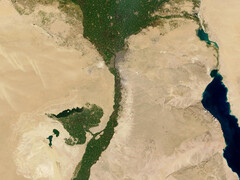There is some consensus: Trees need to be planted, and a few here and there will never be enough. Above all, where there were forests 100 or 200 years ago, they should and must be reforested.
The current trend must not be allowed to continue under any circumstances, as almost 1 million square miles of additional forest area will be lost by 2095. That is around two thirds of the area of the European Union. The predicted global warming would then be 6 degrees Fahrenheit (4 °C) compared to the current figure of significantly less than 3 degrees (2 °C).
However, additional effects have to be taken into account in reforestation, which have been investigated using various earth system models. Depending on how complex the calculations are and which aspects are taken into account, very different conditions for the future arise.
Such a gigantic simulation could only be accomplished with the appropriate computing power, which the supercomputer HPE SGI ICE XA (Cheyenne) has kindly provided. With 145,152 processors, 40 petabytes of memory and a total of 5.3 petaflops, the necessary modeling was possible. And the detailed results are remarkable.
For example, a newly planted forest changes the reflectivity of the earth's surface. The effect, known as "albedo", can even increase global warming, particularly at higher latitudes, where grassland or even poorer soils were previously found.
Trees also contribute to increasing the concentration of ozone and methane, which strengthen the greenhouse effect.
And large areas of forest bind aerosols. These small suspended particles are partly responsible for the formation of clouds, which in turn radiate large amounts of heat into space and thus help to reduce global warming.
Nevertheless, forests can also contribute to cloud formation through evaporation and condensation and thus have a cooling effect. On the other hand, unsuitable planting and unpredictable dry periods could also trigger additional forest fires.
Overall, it can be seen that as complexity increases, forecasting also becomes more difficult. Nevertheless, a few extremes can be identified that can be avoided at best.
Deforestation must be stopped, that is quite clear. But even the effects of maximum possible reforestation hardly seem to lead to the desired result.
The effects of 3 million square miles of new forest, which corresponds to the area of Australia, are not necessarily more positive than those of around 1 million square miles in the right places.
That would be a rough estimate of 300 billion new trees that would have to be planted. This could well offset our global emissions, perhaps even compensate for them - with fewer negative effects at the same time.
Above all, however, it is clear that reforestation alone is by no means the right approach and that every intervention has a multitude of other effects. This could perhaps have been imagined 50 or 100 years ago - even without supercomputers.















